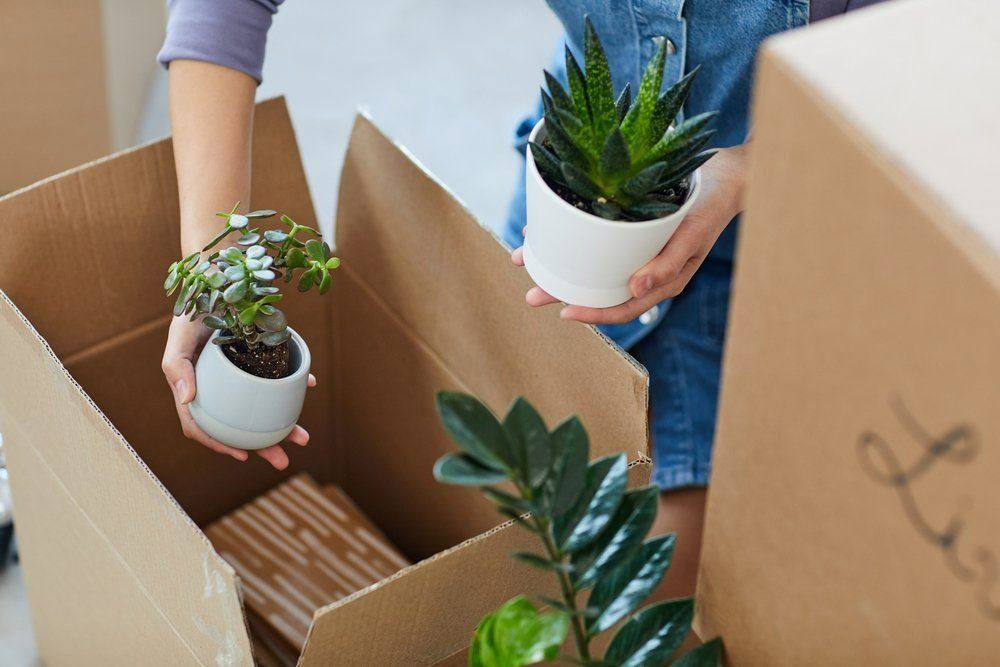How To Move With Plants
6 May 2022

Whether you’re an obsessive plant parent or just have a handful of houseplants, you’ll want to make sure they travel safely to your new home.
As a plant owner, you’ll know how delicate plants can be. Many species dislike having to cope with a change of environment, and even the toughest plants need to be packed and transported with care. At O’Grady’s Transport & Removals , you can be sure we’ll give as much care to your houseplants as we do to your precious furniture and favourite dinner sets.
To help you get your plants from A to B with ease, here are our six top tips for moving with house plants.
As a plant owner, you’ll know how delicate plants can be. Many species dislike having to cope with a change of environment, and even the toughest plants need to be packed and transported with care. At O’Grady’s Transport & Removals , you can be sure we’ll give as much care to your houseplants as we do to your precious furniture and favourite dinner sets.
To help you get your plants from A to B with ease, here are our six top tips for moving with house plants.
1. Prune your plants before they travel
Get rid of any dead or dying leaves. Plants spend energy trying to keep these parts alive and by removing them your plant has more energy to focus on producing new growth. Removing these parts of the plant means less leaf fall too, which means a bit less mess on moving day.
2. Inspect for any unwelcome guests
While you’re pruning your plants of any dead leaves and growth, take time to check for insects or parasites. Remove any infestation before you move, to avoid cross-contamination and taking the problem to your new home.
3. Think about ways to make moving your plants less strenuous
If your plants are in heavy glazed ceramic pots then moving them will be a backbreaking affair.
One option is to re-pot into lightweight plastic – at least as a temporary measure. Each plant needs to be assessed individually though as this type of root disturbance might be too much for some plants to cope with.
If you can’t re-pot, consider investing in a plant dolly – a special trolley with wheels that will make moving a little easier.
One option is to re-pot into lightweight plastic – at least as a temporary measure. Each plant needs to be assessed individually though as this type of root disturbance might be too much for some plants to cope with.
If you can’t re-pot, consider investing in a plant dolly – a special trolley with wheels that will make moving a little easier.
4. Think about your watering regime
As a good plant parent, you’ll have your watering regime off to a tee. Unless your plants are going to be in transit for more than a day or two, then just stick to the regular routine.
As a general rule, it’s more damaging for a house plant to sit with its roots in water than it is for it to get a little dry. If you’re moving during very hot weather and you think your plants may struggle, then you might want to consider using individual irrigators to offer a steady water supply.
As a general rule, it’s more damaging for a house plant to sit with its roots in water than it is for it to get a little dry. If you’re moving during very hot weather and you think your plants may struggle, then you might want to consider using individual irrigators to offer a steady water supply.
5. Moving garden plants
Moving garden plants needs similar care to moving houseplants. If your garden plants are in pots, then just follow the steps described above. If you have plants you wish to dig up, then you’ll need to plan when to do this. Ideally, you’ll transfer to pots well in advance, so the plants have time to adjust. Use good quality compost so they have enough nutrients for their journey and while they are waiting to be planted in your new garden.
You may find some garden plants don’t cope with moving, so it might be best to leave them for the new homeowners to enjoy.
You may find some garden plants don’t cope with moving, so it might be best to leave them for the new homeowners to enjoy.
6. Protecting your plants on their journey
Packing your plants will take special care. At
O’Grady’s Transport & Removals
we have a good range of
packing supplies
and recommend you pack each plant individually. The biggest danger is plants moving around during the journey, and breaking branches or leaf bracts. This can cause shock to the plant, and also leave a place where infection or disease can get in. Secure your plant as well as possible – offcuts of cardboard are great for this and can be moistened to offer a humid environment. You may wish to wrap the upper part of the plant in bubble wrap, or cloth, and perhaps wrap larger branches together.













